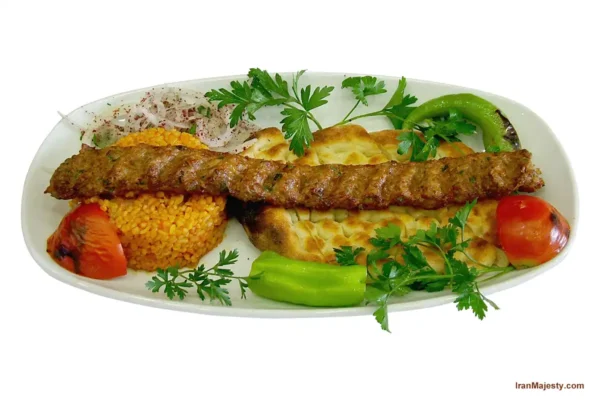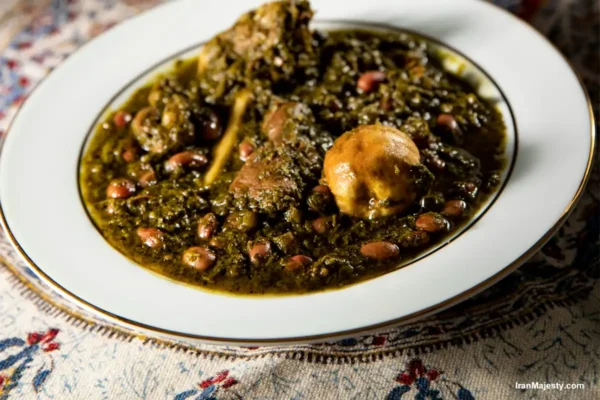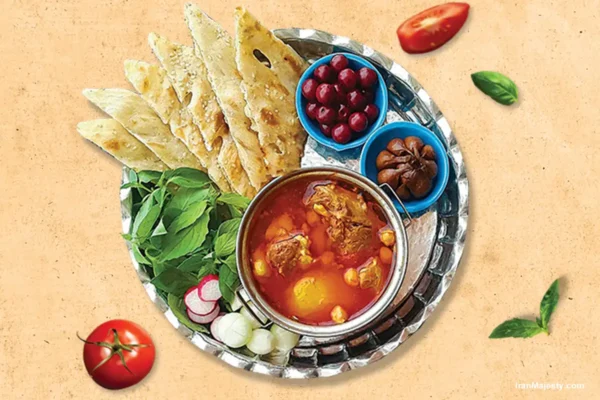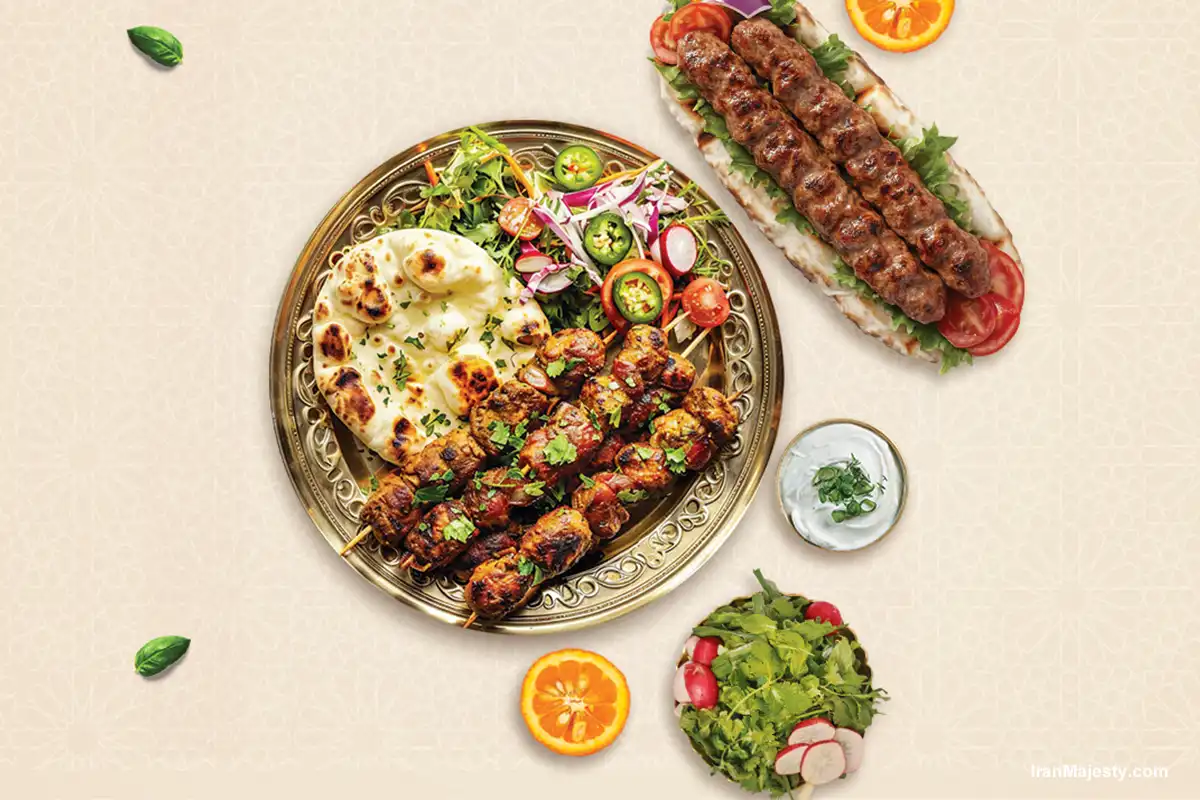Introduction: A Flavorful Memory
Ali, a traveler from Spain, had always been fascinated by Persian cuisine. On his trip to Iran, he found himself in a cozy restaurant in Isfahan, where the scent of grilled kebabs and slow-cooked stews filled the air. The waiter recommended Dizi, a traditional Persian meat dish. As Ali crushed the soft lamb and chickpeas with his bread, he was amazed by the depth of flavor—a perfect blend of spices, tenderness, and centuries-old culinary tradition. This experience ignited his passion for Persian meat dishes and their rich history.
If you, like Ali, are eager to explore Persian cuisine, this guide will introduce you to some of the most beloved Persian meat dishes, their ingredients, and their cultural significance.
The Role of Meat in Persian Cuisine
Meat, particularly lamb, beef, and chicken, plays a vital role in Persian cuisine. Unlike Western meat-heavy dishes, Persian recipes emphasize balance, using a combination of herbs, legumes, and spices to create harmonious and aromatic meals. The preparation of Persian meat dishes often involves slow cooking, allowing the flavors to develop fully.
Common Ingredients in Persian Meat Dishes:
- Saffron – Adds a distinct aroma and golden color.
- Turmeric – A staple spice that enhances depth of flavor.
- Dried limes (Limoo Amani) – Introduce a tangy, citrusy taste.
- Pomegranate molasses – Used in stews for a unique sweet-sour contrast.
- Cinnamon and cardamom – Bring warmth and complexity.
Popular Persian Meat Dishes
1. Kabab (Persian Grilled Meat Skewers)
One of the most famous Persian meat dishes, kababs are often enjoyed at restaurants, picnics, and family gatherings. There are several types:
- Kabab Koobideh – Ground lamb or beef mixed with onions and spices, grilled on skewers.
- Kabab Barg – Tenderized lamb or beef fillet, marinated in saffron and butter.
- Joojeh Kabab – Juicy chicken marinated in saffron, yogurt, and lemon juice.
Best served with grilled tomatoes, saffron rice, and sumac powder.

2. Ghormeh Sabzi (Persian Herb Stew with Meat)
Often considered Iran’s national dish, Ghormeh Sabzi is a slow-cooked stew made with lamb or beef, kidney beans, dried limes, and an aromatic mix of herbs (parsley, cilantro, and fenugreek).
Fact: This dish dates back over 2,000 years and remains a staple in Persian households!

3. Fesenjan (Pomegranate Walnut Stew with Meat)
A luxurious Persian dish, Fesenjan combines ground walnuts, pomegranate molasses, and slow-cooked chicken or duck. The rich, tangy-sweet sauce is a hallmark of Persian culinary artistry.
Tip: For a more traditional experience, pair Fesenjan with saffron rice!
“Here’s an engaging video by International Cuisines on Fesenjan (Pomegranate Walnut Stew with Meat). I’m sharing it here to give you visual context—many thanks to the creator for their expertise.”

4. Dizi (Abgoosht – Persian Lamb and Chickpea Stew)
Dizi, also known as Abgoosht, is a comforting, slow-cooked lamb stew with potatoes, chickpeas, and tomatoes. Traditionally served in a special stone pot, diners crush the ingredients into a paste and eat them with fresh Sangak bread.
Experience Tip: Visit an old-style Persian eatery for an authentic Dizi experience!

5. Beryani (Isfahan-Style Meat Dish)
Unlike Indian Biryani, Isfahan’s Beryani is a pan-fried minced lamb dish flavored with cinnamon and turmeric, served on thin flatbread with Doogh (Persian yogurt drink).
Where to Try: Best enjoyed in Isfahan’s traditional restaurants.
The Art of Cooking Persian Meat Dishes
Cooking Persian meat dishes requires patience and precision. Here are some essential techniques:
- Slow Cooking: Many Persian stews require long simmering times to develop deep flavors.
- Marination: Kababs are marinated in saffron, lemon juice, and yogurt for hours to enhance tenderness.
- Layering Flavors: Persian chefs carefully balance sweet, sour, and savory elements in every dish.
Pro Tip: Always use high-quality saffron for authentic Persian flavor.
Why Try Persian Meat Dishes?
Persian cuisine is not just about food; it’s an experience. The flavors tell stories of ancient trade routes, cultural exchanges, and centuries-old traditions. Whether you’re savoring a juicy kabab or indulging in a rich stew, Persian meat dishes offer a journey through time and taste.
If you love exploring world cuisines, Persian food will captivate your senses!
Conclusion: A Culinary Invitation
Persian meat dishes reflect the heart of Iranian hospitality and culinary mastery. From the smoky aroma of grilled kababs to the comforting richness of stews, each dish invites you to discover a new layer of Persian culture.
If you’re planning a trip to Iran, don’t miss the chance to experience these incredible flavors firsthand. Visit a bustling bazaar, try Dizi at a traditional eatery, or share a homemade Fesenjan with locals. Persian cuisine is not just about eating—it’s about celebrating life and community.
Have you ever tried Persian meat dishes? Share your experience in the comments below! If you found this guide helpful, help others discover Persian cuisine by sharing this article. 🍽✨


0 Comments